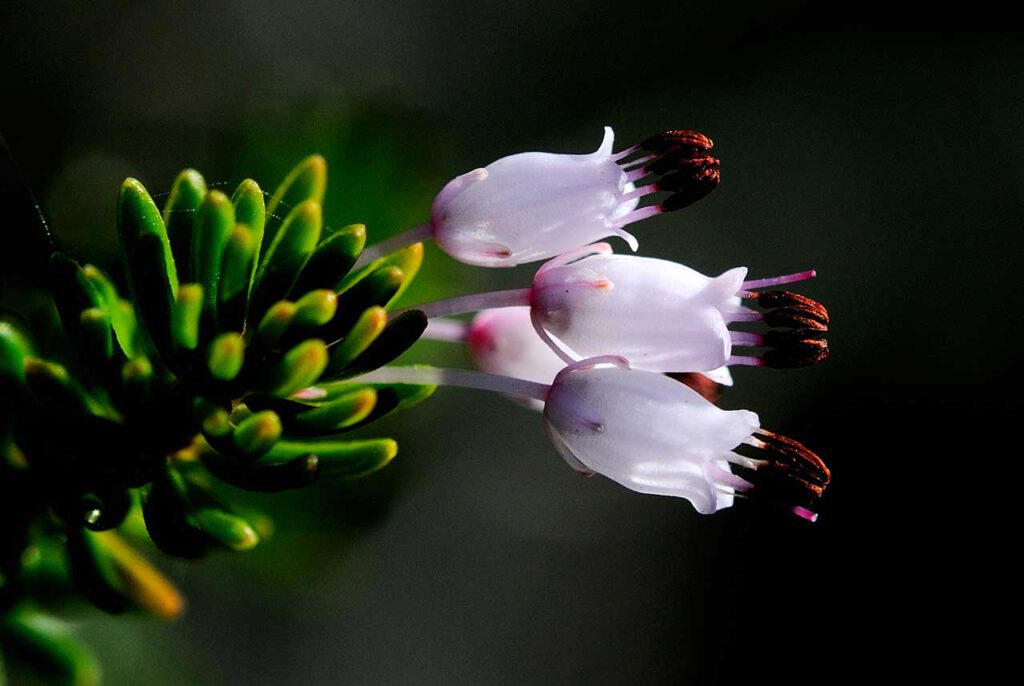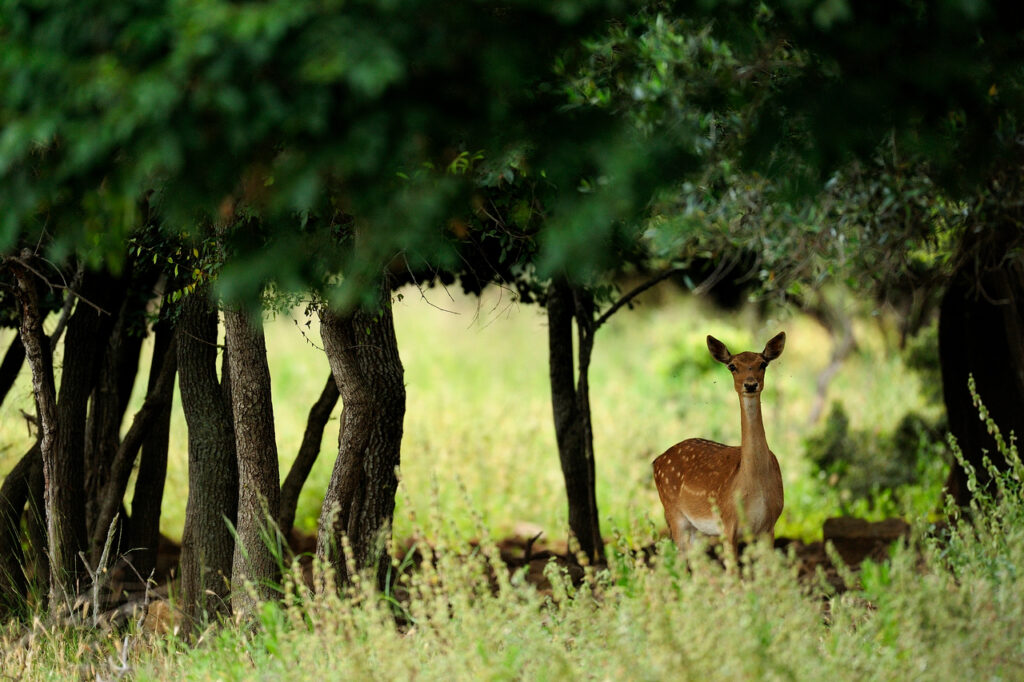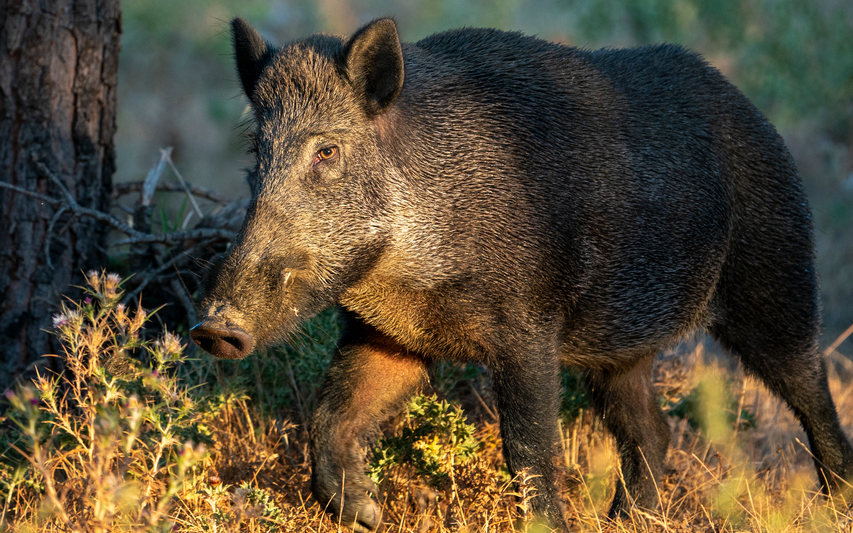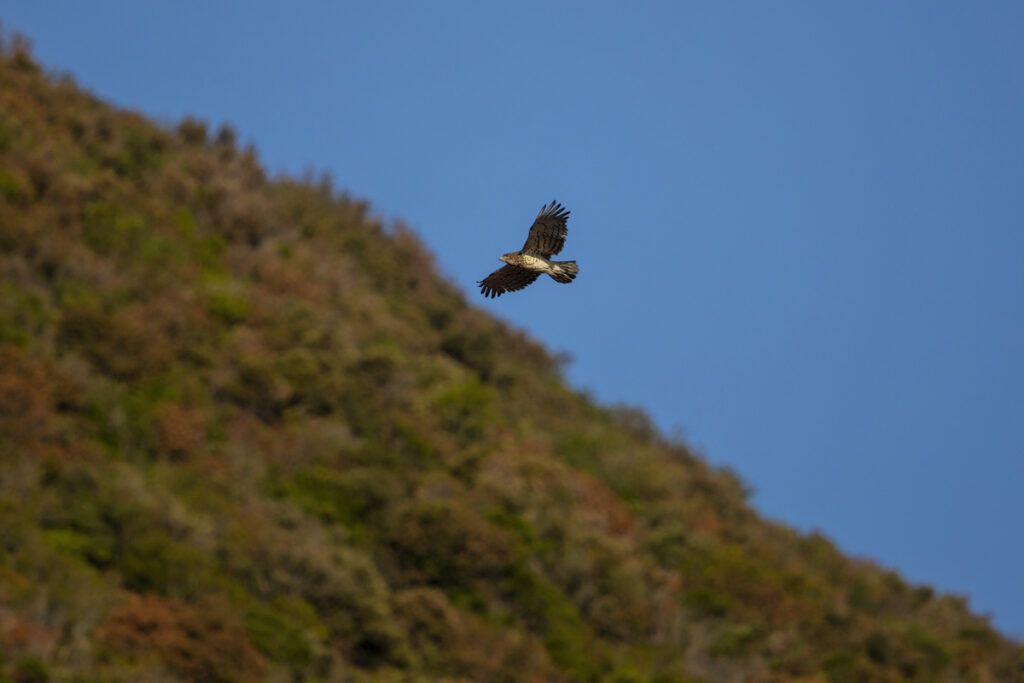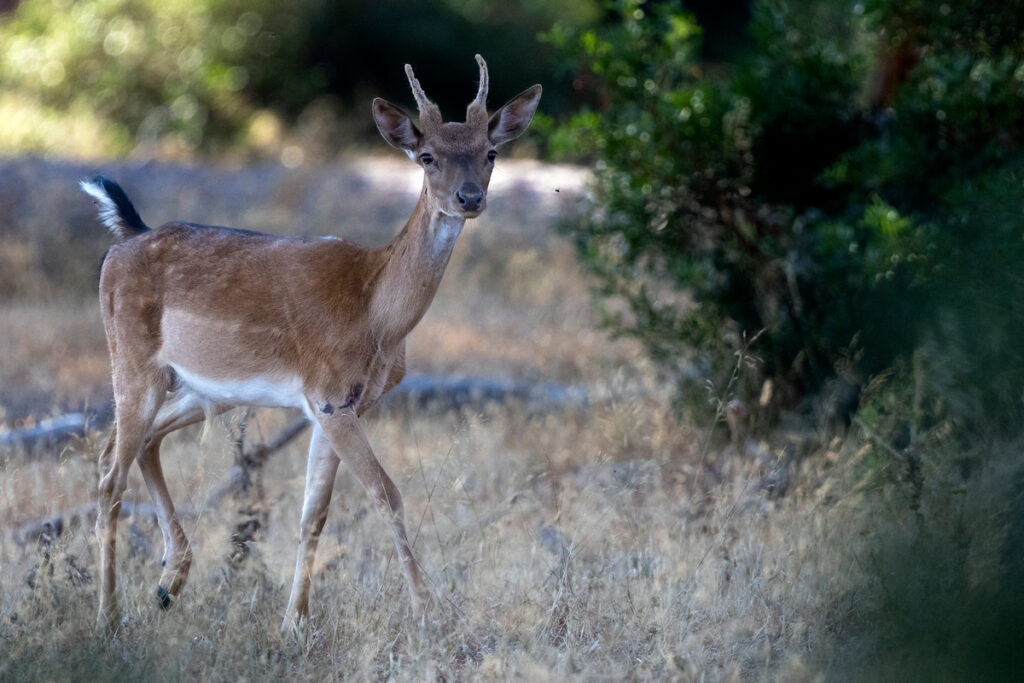The two faces of the forest
The 3200 hectares of forest on the Uccellina mountains, traditionally called this even if they are hills, are the great evergreen treasure of the Park. In fact, it is a single large holm oak forest which from a certain distance may seem all the same, but which reveals very different aspects to those who travel through it.
On the slopes facing east and north, the trees grow better, and as in any Mediterranean environment, the key factor is water. Here, especially at the lower altitudes, water is more abundant and the sunlight is lower, while the hills protect the trees from the winds that blow from the sea and increase the loss of water from the leaves. The dominant species is the holm oak, which is often associated with the strawberry tree, while in the more humid and protected valleys there are ash trees, maples, turkey oaks and hornbeams, and occasionally also laurel trees. In the undergrowth you can find cyclamens, butcher’s broom and “strappabrache”.
The slopes facing west and south are hotter and drier, both due to the greater sunshine and the effect of the sea winds, which typically blow from the southwest. Here the holm oaks are smaller and in many areas, especially at lower altitudes near the sea, the holm oak forest becomes scrub with the presence of heather, phillyrea and mastic, or even garrigue, dominated by low juniper, rosemary and cistus shrubs. Very hot in summer, but mild, flowery and fragrant in winter and early spring.
But this is not the only key to understanding these woods.
The imprint of history
The Uccellina woods are in fact what remains of the woods that once covered almost the entire Italian coast. They were still holm oak woods, but different from how they appear today.
They were in fact made up of much larger trees, which in the lower part of the slopes facing inland easily reached 25 meters in height, and since no one cut them down
they also lived for centuries, often exceeding a thousand years of age. The small bands of hunters and gatherers limited themselves to gathering acorns and hunting, obtaining wood for heating and cooking from trees or branches blown down by the wind.
Three thousand years ago, with the arrival of large communities of settled farmers, everything changed. From then until the last century the forest was regularly cut down, generally every ten or fifteen years. From each holm oak stump several shoots are reborn within two years, small trunks that are well suited to both cutting and the production of charcoal, which is easier to transport and has a high calorific value. Even today, the remains of charcoal burners’ pitches can be found almost everywhere. Around human settlements, such as the Abbey of San Rabano, the forest was eliminated to make room for crops and also to avoid being taken by surprise by pirates or bandits. And the soil left uncovered by cuts and clearings was easily eroded by the rains that came down the steep slopes.
The holm oak forest began to recover in the eighteenth century when these hills became a hunting reserve, and especially after the establishment of the Park in 1975. Today the cuts are rare and limited, and serve on the one hand to preserve the traditional landscape of the Maremma scrub , and on the other to provide nourishment to deer and roe deer (which feed on grasses and shoots) and many species of birds (which feed on the berries of the shrubs that settle in the cutting areas while the holm oaks are still small). In the most favorable areas, the forest is thinned out and started to become a tall holm oak forest.
Over time, which for a forest means several decades, the Uccellina mountains will host a forest made up of increasingly larger trees, alternating with clearings opened by fires started by lightning and small areas in different stages of regrowth. An increasingly complex ecosystem rich in biodiversity, where perhaps every sign of human activity will be completely lost.
Yet they are there
In the thick woods, not to mention the scrub, spotting animals is more difficult than in the Grand Ducal pine forest or in the open areas around the Ombrone and its mouth.
However, the Uccellina mountains are very well populated. Although they are not easy to see here, except at dawn and after sunset, these woods are a refuge area for porcupines, fallow deer, roe deer, wild boars, foxes and wolves. In fact, one always encounters many traces of it: paths in the scrub, footprints, dens, burrows, wild boar pits, soil disturbed and turned over by wild boars, porcupine quills. It is more difficult to notice the presence of martens and wild cats, particularly elusive animals, as well as that of hedgehogs, shrews, octopus and mice that move in the densest vegetation and foliage on the ground.
For birds, these woods are often a seasonal opportunity. Many migrants stop for a break. Wood pigeons, starlings, finches, robins, thrushes and blackbirds winter here taking advantage of the abundance of berries and acorns. In spring and summer, nightingales, hoopoes and cuckoos arrive. Instead, blackcaps, tits, treecreepers and the omnipresent jays are resident, dispersing the seeds of the trees and accelerating the renewal and spread of the forest. In the low Mediterranean scrub near the sea you can find magnanina, nightjar, and eye-cook. To notice their presence, it is best to learn to recognize their songs.
A little easier, if you pay attention, is the sighting of birds of prey, such as hen harrier, merlin, lanner and harrier.
WHAT TO KNOW
WHERE TO GO


